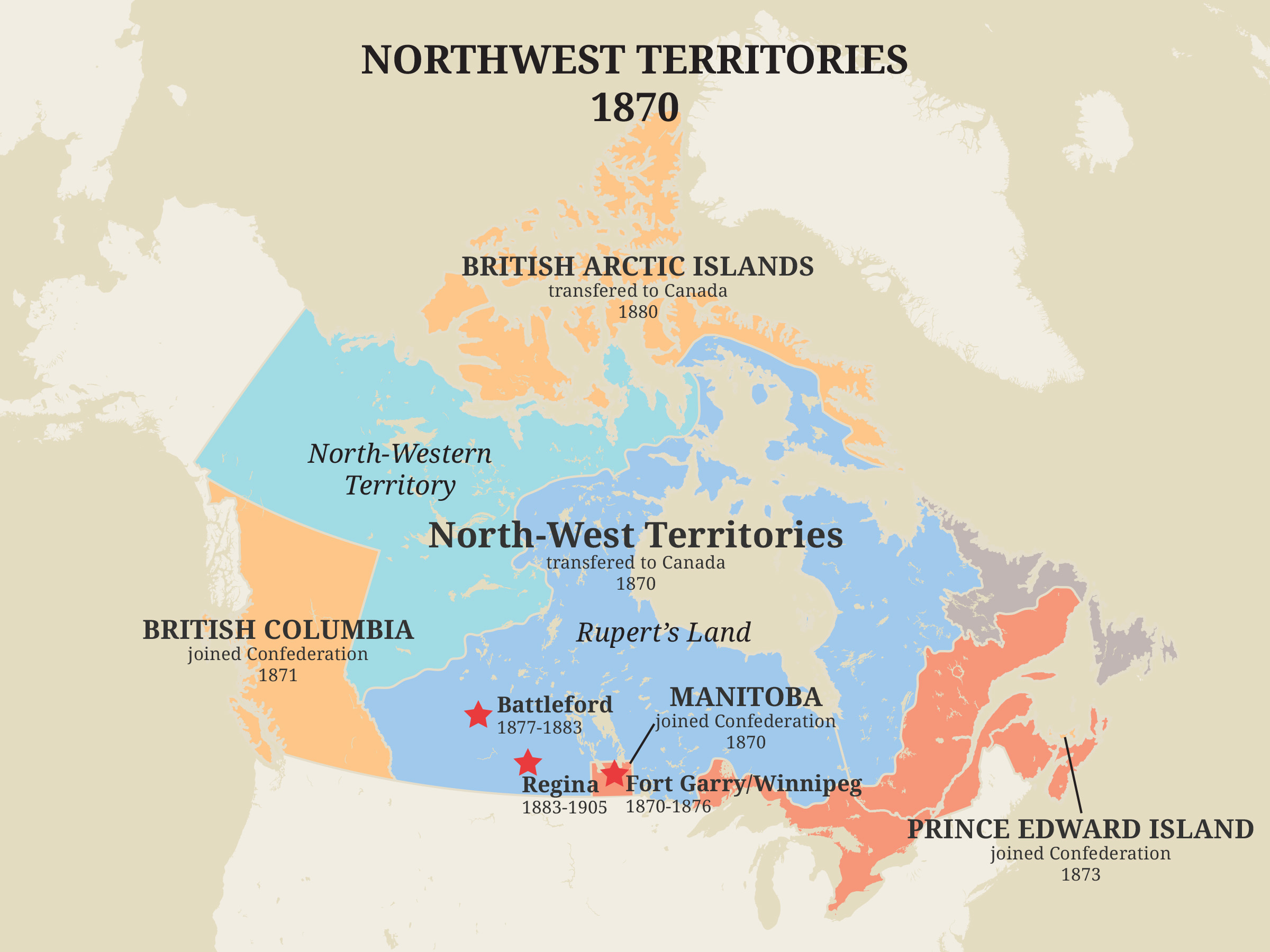British North America refers to the British colonies and territories in North America after the US became independent in 1783 (see also American Revolution) and until Confederation in 1867. The British North America Act (BNA Act), which came into effect on 1 July 1867, united three of the five British North American colonies. The Act (renamed the Constitution Act, 1867, in 1982) is the foundational document of Canada’s Constitution.
Colonies of British North America
The colonies of British North America in what is now Canada initially consisted of the provinces of Quebec, Nova Scotia, St John's Island, Newfoundland, the Hudson's Bay Company (HBC) territories (see also Rupert’s Land and the North-Western Territory, 1870-1905), and lands belonging directly to the Crown.
The influx of Loyalist settlers from the US into Nova Scotia resulted in the creation of New Brunswick and Cape Breton Island as separate colonies in 1784. The division of the Province of Quebec into Upper Canada and Lower Canada in 1791 separated the people of predominantly British and American origin in the west from those of mainly French origin in the east.
In 1799, St John's Island was renamed Prince Edward Island. In 1820, Cape Breton Island was reunited with Nova Scotia and in 1841, Upper and Lower Canada were united to form theProvince of Canada.
On the west coast, the HBC colony of Vancouver Island was established in 1849 and what is now southern British Columbia became another crown colony in 1858. In 1866, the two were united as British Columbia, a single colony with enlarged boundaries.

Confederation and the BNA Act
The colonies of British North America were impelled to unite into a single country. The reasons for this include a protectionist US trade policy, fears of American aggression and expansion during the American Civil War, and Britain’s increasing reluctance to pay for the defence of British North America by the 1860s. Confederation would give the colonies strength through unity.
A series of negotiations and conferences culminated in Confederation on 1 July 1867. The British North America Act (BNA Act), Canada’s Constitution, united Quebec, Ontario, Nova Scotia and New Brunswick into the Dominion of Canada. A new federal government was established in Ottawa. Between 1867 and 1999, six more provinces and three territories joined Confederation.
In 1982, the BNA Act was renamed the Constitution Act, 1867. In that year, the Constitution Act, 1982, achieved full independence for Canada by allowing the country to change its Constitution without approval from Britain.

 Share on Facebook
Share on Facebook Share on X
Share on X Share by Email
Share by Email Share on Google Classroom
Share on Google Classroom












